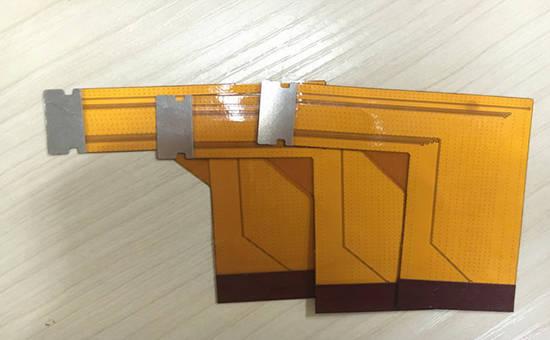Managing Glue Overflow in Flexible Printed Circuit Manufacturing

Introduction
Glue overflow in Flexible Printed Circuit (FPC) manufacturing occurs when the adhesive from the overlay flows out during the lamination process, leading to undesirable glue stains on the FPC pads. This issue is often triggered by the rise in temperature during lamination, causing the adhesive to become more fluid. Several factors contribute to glue overflow, and it is essential to address each one specifically to ensure optimal manufacturing quality. Below, we explore the primary causes of glue overflow and provide effective solutions to mitigate this common problem.
Manufacturing Process-Induced Glue Overflow
Glue overflow can be a direct result of issues within the manufacturing process. To prevent this, FPC manufacturers like Gekunflex should implement stringent incoming material inspections. If the adhesive overflow exceeds acceptable limits during sampling, it is crucial to coordinate with suppliers to return or exchange the materials. Failure to control the quality at this stage can make it challenging to manage glue overflow later in the production process.
Environmental Storage Conditions
Improper storage conditions can also lead to glue overflow. FPC manufacturers should invest in specialized refrigeration units to store protective films under optimal conditions. If overlay (CL) adhesives become moist due to inadequate storage, a low-temperature pre-baking process can significantly reduce the occurrence of glue overflow. Additionally, any unused CL should be promptly returned to the cold storage after use to maintain its integrity.
Localized Glue Overflow on Small PADs
One of the most common quality issues encountered by FPC manufacturers is localized glue overflow around small pads. Adjusting process parameters solely to address this problem can lead to other issues, such as bubbles or insufficient peel strength. Therefore, it is essential to carefully balance and adjust process parameters to minimize glue overflow without compromising other quality aspects.
Operator-Induced Glue Overflow
Improper handling during the production process can also cause glue overflow. During the pre-lamination alignment process, operators must ensure precise positioning and calibration of alignment fixtures. Increasing the frequency and rigor of alignment checks can prevent misalignment, which is a common cause of glue overflow. Additionally, it is important to maintain a clean working environment by implementing “5S” practices, such as inspecting the overlay for contamination or rough edges before alignment.
Conclusion
Addressing glue overflow in FPC manufacturing requires a comprehensive approach that involves careful inspection of materials, optimal storage conditions, precise process adjustments, and meticulous handling by operators. By implementing these solutions, manufacturers like Gekunflex can significantly reduce the occurrence of glue overflow, ensuring higher quality FPC products and improved production efficiency.



